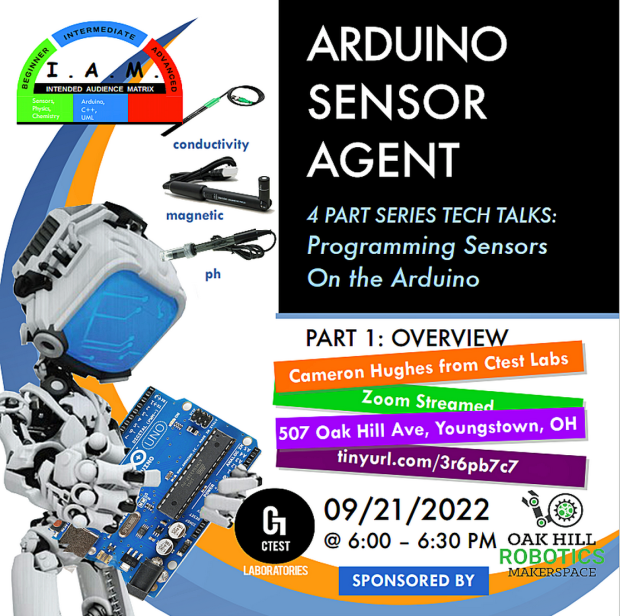Check Out the Retro Underground Robotics (R.U.R.) Series on Classic Robot Programming!

The R.U.R. Series is a succession of tech talks on classic approaches to programming robots and other autonomous systems. The series of talks is scheduled to start Wednesday, September 21, 2022 and will take place on the Robot Teams YouTube Channel and at the Oak Hill Robotics Makerspace (ORM) throughout 2022 & 2023. The talks center on the Arduino and the Raspberry Pi and how they can be combined to build robot controllers and other autonomous and embedded systems. In these talks, there is an express focus on fundamental program design methodologies, micro-controller programming, and engineering principles. The material in the talks will range from introductory to advanced covering many aspects of object-oriented programming, logic programming, and agent-oriented programming.
The applications discussed and demonstrated are all related to physical computing, citizen science, and environmental sustainability. The robot components described and robots designed will be used to compete in the CSI-CLUE Biennial Classical AI vs. Bio-inspired Robotics Challenge. Each talk is meant to provide a basic understanding of some of the fundamental aspects of one or more of the following: micro-controller programming, sensor, actuators, and end-effector programming, along with robot navigation, interaction, communication, knowledge reasoning and representation, environmental modeling, simulation, and problem solving. The talks are open to anyone who has the patience, courage, and determination to be involved. They will all be hosted on Zoom and in many cases the presenters will be on site for AMA (Ask Me Anything) Q&A sessions. Cameron and Tracey Hughes' book, “A Guide to Autonomous Robot Programming,” can be used as supplemental material to gain further insights into the R.U.R Series.
The first 4 tech talks entitled “An Arduino Sensor Agent: Programming Sensors on the Arduino” will feature the magnetic, conductivity, and pH sensors. A magnetic sensor detects the magnitude of magnetic fields around permanent magnets and electromagnets, and geomagnetism (Earth's magnetic field). A conductivity sensor can be used to measure a solution's conductivity (ability to conduct an electrical current) or total ion concentration of an aqueous sample. Conductivity and ionic concentration can determine the amount of salinity in a solution. pH sensors are used to describe how acidic or basic an aqueous solution is. pH reflects the chemical conditions of a solution that controls nutrient availability, biological functions, microbial activity, and chemical behavior.
The first talk on programming these sensors entitled “Part 1: Sensor Agents: An Overview” will take place on Wednesday, September 21, 2022. It will be streamed at the Oak Hill Robotics Makerspace 507 Oak Hill Ave, Youngstown, Ohio at 6:30 PM EST and posted to the Robot Teams YouTube channel (tinyurl.com/3r6pb7c7). The following 3 tech talks include:
Part 2: Sensor Agents: The Design
Part 3: Coding Sensor Agents on the Arduino
Part 4: Arduino Sensor Agents System Check
We look forward to holding these talks and hope to see you there! Keep posted on our schedule of presentations at the Robot Teams YouTube channel.
--Tracey Hughes, tracey.hughes[at]neoacmchapter[dot]org.
